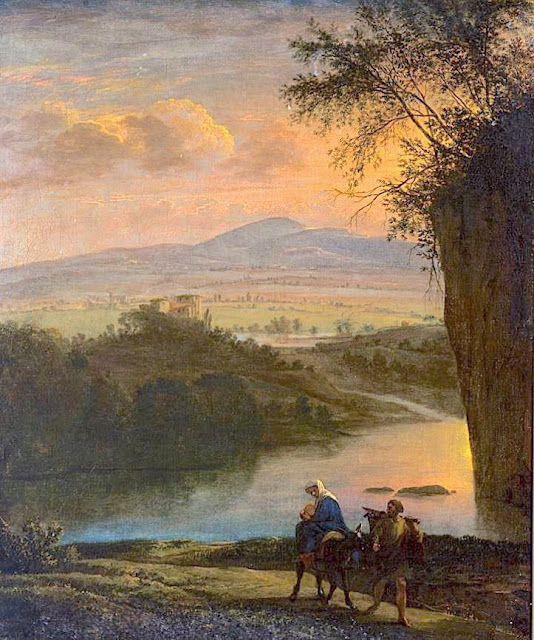
PAUL-JEAN FLANDRIN (1811-1902)
Adrar Sagro (2,712m - 8,897ft)
Morocco
In "Les Gorges de l'Atlas, " 1843, oil on canvas, 1843, Private collection
The mountain
Adrar Saghro or Jebel Saghro (2,712m - 8,897ft) is a mountain in southern Morocco, located east of Ouarzazate, 70 km south of the central High Atlas, dominating the Drâa valleys to the west and south, and that of Dades to the north. It constitutes the eastern part of the Anti-Atlas. Jebel Saghro is the driest area of the Anti-Atlas range. Unlike the areas located further west, it does not benefit from a high enough air humidity due to the remoteness of the Atlantic Ocean. Annual precipitation does not exceed 100 mm in the south and 300 mm on the summits. Jebel Saghro is oriented along a southwest / northeast axis, and extends towards Jebel Ougnat east of Wadi Alnif and the Tizi n'Boujou pass. It borders the Dades valley and the High Atlas to the north and links the Drâa valley to the south. Lunar landscape of plateaus, peaks, canyons crossed by wadis, forests, all dominated by basalt peaks. Oleanders, junipers, mountain flowers ... occupy the valley bottoms. The north-south crossings are made by three passes crossed by difficult and very spectacular tracks: the Tazazert pass (2,283 m), the Kouaouch pass (2,592 m), and the Tagmout pass (1,919 m). The highest point of the mountain is Amalou n Mansour (2,712 m) which is located to the south-east of the village of Iknioun.
Charles de Foucauld, still only in search of adventure, is one of the first Western travelers to have described his crossing of Jebel Saghro (Reconnaissance au Maroc published in 1888 in Paris). It completes its description with a topographic survey. Jebel Saghro was also later the setting for fierce fighting linked to the progression of the French army within the framework of the protectorate, the battle of Bougafer (February-March 1933), in which the French troops allied to those of the Sultan of Morocco faced an impressive and heroic resistance from the Aït Atta tribes led by Sheikh Assou Oubasslam. It is in this massif that the famous captain Henry de Bournazel, one of the protagonists of this war, was killed in the fight against the Berbers, while assaulting the rocky dome.
The painter
Paul-Jean Flandrin is a French painter, younger brother of the painters Auguste Flandrin and Hippolyte Flandrin. he first received advice from the landscape and animal painter Antoine Duclaux, as well as from the sculptor Jean-François Legendre-Héral, before joining the École des beaux-arts de Lyon, then that of Paris and the workshop by Jean-Auguste-Dominique Ingres.
He failed twice in the Prix de Rome competition but nevertheless joined at his own expense his brother Hippolyte in Italy. They stayed in Rome for four years, during which Paul specialized in landscape painting. He carried out studies from nature which he used to undertake historical compositions which he presented at the Parisian Salons. He also regularly collaborates on the landscapes of his older brother's paintings. Flandrin continued until late in the nineteenth century this tradition of classical landscape of which he was one of the best representatives, alongside Édouard Bertin or his father-in-law Alexandre Desgoffe. He combines this with a sense of line and ideal inherited from the lessons of his master Ingres. Charles Baudelaire thus accuses him of wanting to “Ingriser” (painted like Ingres) the landscape, a criticism that will long be associated with it.
2021 - Wandering Vertexes...
by Francis Rousseau

















